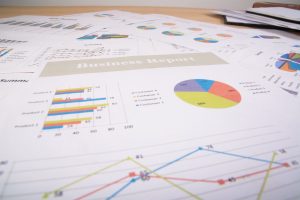As inflation pressures consumers across the globe, the prospect of purchasing a vehicle without incurring debt has become more desirable. With rising interest rates dampening loan accessibility, many are reevaluating their financial strategies. This article outlines effective methods to save for a car without relying on loans, enabling consumers to achieve their automotive dreams while maintaining solid financial health.
Understanding the Current Auto Market
The automotive market is experiencing significant shifts, with the average transaction price of a new vehicle soaring to approximately $46,000 in 2023, according to the automotive research firm Kelley Blue Book. As prices escalate, potential car buyers are increasingly turning to saving strategies to circumvent high interest rates and unfavorable loan terms. The Federal Reserve’s commitment to combating inflation has led to heightened interest rates, making loans less appealing for prospective buyers. Therefore, the urgency to save is more pressing than ever.
Market Impact
A drive towards savings can significantly impact personal financial health. Traditionally, auto loans have provided a quick path to vehicle ownership, but their cost implications can be burdensome. For example, a typical five-year auto loan at a 6% interest rate could require repayments exceeding $1,300 monthly for a vehicle priced at $30,000. By saving instead, consumers avoid interest payments altogether, potentially freeing up thousands of dollars over the loan’s life.
In addition to financial savings, the shift toward saving over borrowing could support sustainable economic patterns. As rising interest rates curb consumer spending, a bloc of savers could enhance economic stability in the long run.
Expert Opinion
Financial experts underscore the importance of establishing a practical savings plan. “Before worrying about the car itself, it’s essential to assess your budget and determine how much you can realistically save each month,” advises Jane Thompson, a certified financial planner in New York. “Setting a savings goal and breaking that down into manageable monthly targets can help turn the dream of owning a car into a reality.”
Thompson also advocates for creating a separate savings account dedicated exclusively to car expenses. This psychological barrier can encourage disciplined savings without tapping into everyday finances. “Additionally, consider automating your savings,” she adds. “Setting up automated transfers to your savings account streamlines the process and helps build your fund consistently.”
Practical Saving Strategies
Several proven techniques can aid in effective car savings. Firstly, creating a detailed budget is crucial. Consumers should evaluate their monthly income and expenses to identify potential savings channels. Regularly reviewing financial habits can highlight unnecessary expenditures that can be redirected towards car savings.
Secondly, it may be beneficial to explore side hustles or freelance opportunities to supplement income. The gig economy offers various options that allow individuals to earn additional funds which can be fully allocated towards their vehicle savings.
Next, taking advantage of windfalls—such as tax refunds, bonuses, or gifts—can significantly bolster savings. Allocating 100% of such unexpected funds to a dedicated car savings account can expedite the journey to ownership.
What’s Next?
As interest rates remain unpredictable and car prices remain high, the future of vehicle ownership will likely lean further towards saving rather than borrowing. With experts predicting stabilization in the auto market over the next few years, those who prioritize saving now could not only stand ready to purchase their desired vehicle outright but also cultivate a healthier approach to personal finance.
In conclusion, the path to vehicle ownership without loans is intricate yet attainable with strategic planning and disciplined savings. As more individuals opt for this route, it may foster a broader cultural shift towards financial responsibility and independence in an economy that increasingly champions resilience over reliance on borrowed funds.








